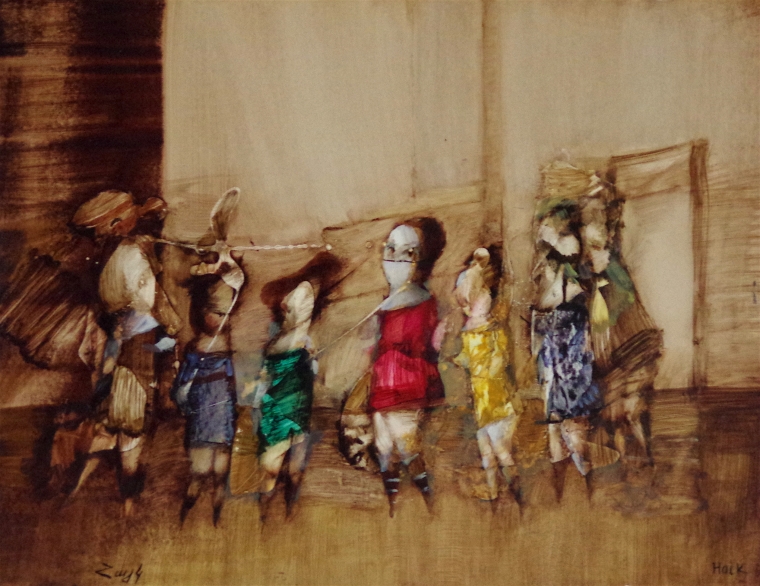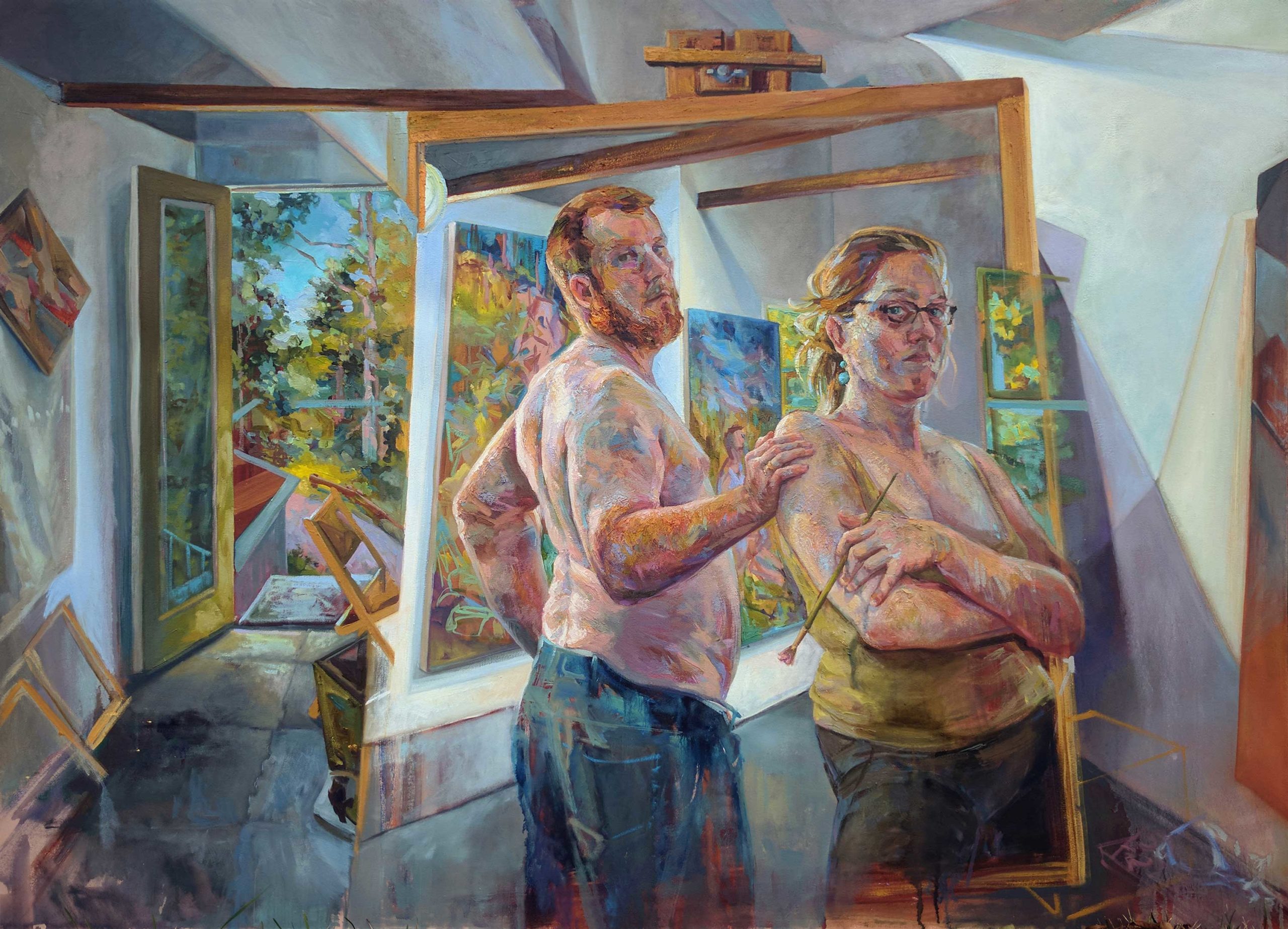Grasping the Art of Metaphorical Oil Painting: Necessary Tips and Techniques for Aspiring Artists
Metaphorical oil painting stands for a complicated junction of strategy and analysis, requiring a detailed comprehension of human composition, structure, and color theory. An exploration of color consistency and structure strategies can dramatically boost the visual influence of their work.

Recognizing Human Makeup
Recognizing human anatomy is fundamental for any kind of artist aspiring to understand figurative oil painting. A detailed understanding of the human form allows musicians to develop natural depictions that resonate with customers. Expertise of anatomical structures, such as muscles, bones, and joints, provides vital understanding right into just how the body steps and postures.
Musicians must familiarize themselves with the proportions of the human number, consisting of the connection in between various body components and how these proportions differ throughout ages and sexes. This understanding permits precise scaling and perspective in their job. Additionally, recognizing the underlying musculature improves the capacity to show movement and stress in a figure, causing a much more dynamic and engaging composition.
Researching anatomy additionally helps in recognizing refined nuances in position and expression, which are critical for communicating feeling and story within a painting. Resources such as physiological textbooks, life drawing sessions, and online tutorials can be vital devices for musicians looking for to deepen their anatomical expertise. Inevitably, understanding human anatomy not just boosts technological skill however likewise enriches an artist's innovative vision, enabling them to bring their metaphorical oil paints to life with credibility and depth.
Significance of Composition

Secret principles of make-up include balance, unity, and prime focus. Attaining equilibrium guarantees that no single component bewilders the others, while unity develops a sense of harmony throughout the piece. Centerpieces accentuate significant aspects of the art work, enabling audiences to engage with the story or motif more deeply.
Furthermore, making use of leading lines and the regulation of thirds can dramatically improve composition. Leading lines naturally lead the customer's look through the paint, while the policy of thirds provides a structure for positioning key aspects in an aesthetically attractive manner. By mastering structure, striving artists can boost their figurative oil paintings, changing them into engaging visual stories that reverberate with their target market.
Learning Shade Theory
Shade theory offers as an essential aspect of figurative oil painting that complements the concepts of composition. Recognizing the shade wheel, which consists of key, secondary, and tertiary colors, is necessary for creating harmonious palettes and effective aesthetic narratives.
Trick ideas such as saturation, worth, and hue play an essential role in establishing the state of mind and impact of a paint. Artists ought to discover cool and cozy colors to stimulate particular emotions; warm shades commonly communicate power and interest, while great colors can convey peace and serenity.
The connection between complementary shades-- those contrary each various other on the color wheel-- can More Bonuses create striking contrasts and dynamic structures. When juxtaposed, these colors boost each various other's vibrancy, drawing the viewer's eye and including depth to the artwork.
Furthermore, recognizing similar colors permits artists to accomplish a sense of unity and comprehensibility. By picking shades that are adjacent on the wheel, one can maintain a well balanced environment throughout the item.
Ultimately, understanding color concept furnishes aiming artists with the devices required to control shade intentionally, enhancing their capability to convey emotion and story with metaphorical oil painting. figurative oil painting.
Methods for Structure
A selection of methods can effectively produce appearance in metaphorical oil paint, including deepness and measurement to the art work. One essential approach is using impasto, where thick layers of paint are put on the canvas, allowing for a three-dimensional top quality. This technique enhances light interaction, producing dynamic aesthetic rate of interest.
One more approach is scumbling, which includes using a thin layer of lighter paint over a dried darker layer. This technique allows the underlying color to reveal through, causing a soft, distinctive effect that can evoke a feeling of environment or age. Dry brushing is additionally important; making use look at this now of a completely dry brush with marginal paint, artists can create fragile appearances and fine lines, excellent for capturing the subtleties of skin or material.
In addition, combination blades can be utilized to apply or scrape paint, creating special patterns and textures. Trying out various devices and materials, such as sponges or cloths, can even more enhance the textural quality of a paint. Ultimately, grasping these methods calls for technique and experimentation, allowing musicians to uncover the diverse responsive top qualities that can boost their metaphorical works.
Establishing Your Special Style
A musician's unique design is typically the end result of personal experiences, influences, and techniques refined gradually. Developing this uniqueness in metaphorical oil find here paint requires a conscious effort to explore both your psyche and the wider artistic landscape. Begin by assessing the styles and topics that reverberate with you emotionally; your passion will infuse authenticity into your work.
Research different designs and motions, but as opposed to imitating, essence elements that talk to you - figurative oil painting. Trying out different techniques, shade schemes, and make-ups, enabling on your own the flexibility to play without the pressure of excellence. Keep a sketchbook or journal to record your ideas, ideas, and artistic development; this will certainly offer as an important resource for identifying recurring themes and choices
Look for positive comments from advisors or peers, as they can provide insights that light up facets of your job you may ignore. Be person with on your own; the trip of creating an unique design is recurring, developing with every canvas and each brushstroke you run into.

Final Thought
Mastering metaphorical oil painting requires a detailed grasp of human composition, composition, and shade concept. The assimilation of these elements not just enhances technical skills but also improves the emotional resonance of the artwork. Furthermore, the expedition of structure strategies adds to a richer visual experience. Eventually, the cultivation of an unique style through continuous method and reflection is crucial for creative advancement. Welcoming these foundational principles will considerably profit aspiring musicians on their creative trip.
Figurative oil painting stands for an intricate junction of method and interpretation, demanding a detailed comprehension of human anatomy, composition, and color concept. An expedition of color harmony and structure strategies can significantly enhance the aesthetic impact of their job. By mastering structure, aspiring artists can elevate their figurative oil paintings, transforming them right into compelling visual stories that reverberate with their target market.
Experiment with different techniques, shade combinations, and make-ups, permitting on your own the flexibility to play without the stress of excellence.Mastering figurative oil paint demands an extensive grasp of human anatomy, structure, and shade theory.